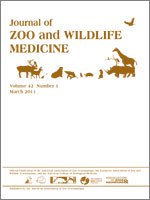Telazol® has been commonly used for field anesthesia of wild lemurs, including ring-tailed lemurs (Lemur catta). Telazol alone provides good induction, but doesn't cause adequate muscle relaxation and sedation for collecting consistent somatic measurements and high-quality dental impressions that are sometimes needed. Variability in induction response has been seen between individuals that have received similar dosages, with young lemurs seeming to need more anesthetic than mature lemurs. This investigation evaluated Telazol induction in young (2.0–4.9 yr) and mature (≥5.0 yr) ring-tailed lemurs and compared postinduction supplementation with medetomidine or medetomidine–butorphanol. Forty-eight lemurs were anesthetized with Telazol administered via blow dart; then, 20 min after darting, they were supplemented via hand injection with either medetomidine (0.04 mg/kg) or medetomidine–butorphanol (0.04 mg/kg and 0.2 mg/kg, respectively). The odds ratio for young lemurs to need more than one dart for induction, relative to mature lemurs, was 3.8, even though the initial dose of Telazol received by young lemurs (19 ± 7 mg/kg) was significantly higher than the initial dose administered to mature lemurs (12 ± 5 mg/kg). The total Telazol dosage was also significantly different between young lemurs (33 ± 15 mg/kg) and mature lemurs (18 ± 9 mg/kg). Both medetomidine and medetomidine–butorphanol provided good muscle relaxation and sedation for all procedures. Physiologic values were similar between the two protocols. Oxygen saturation by pulse oximetry was generally good, although there were a few SaO2 values <90%. Recoveries were smooth, but long. Time to head up was correlated with total Telazol dosage in mature lemurs. In young lemurs, time to standing was correlated with Telazol induction dosage and time of last Telazol administration. Lemurs that received hand injections of Telazol took longer to recover than those that did not. Further refinements are needed to increase induction reliability and to decrease recovery time, particularly in young lemurs.
How to translate text using browser tools
1 March 2011
Field Anesthesia of Wild Ring-tailed Lemurs (Lemur catta) Using Tiletamine–Zolazepam, Medetomidine, and Butorphanol
R. Scott Larsen,
Anneke Moresco,
Michelle L. Sauther,
Frank P. Cuozzo
ACCESS THE FULL ARTICLE
Anesthesia
butorphanol
Lemur catta
medetomidine
ring-tailed lemur
Telazol





